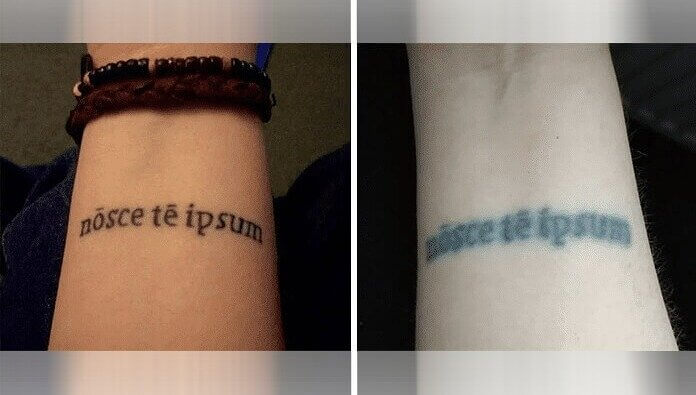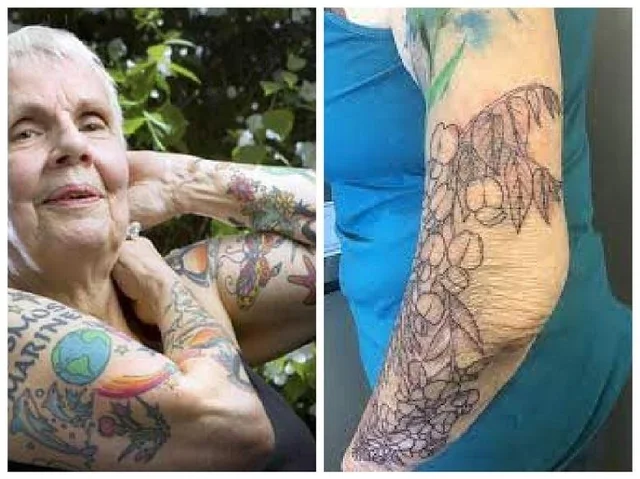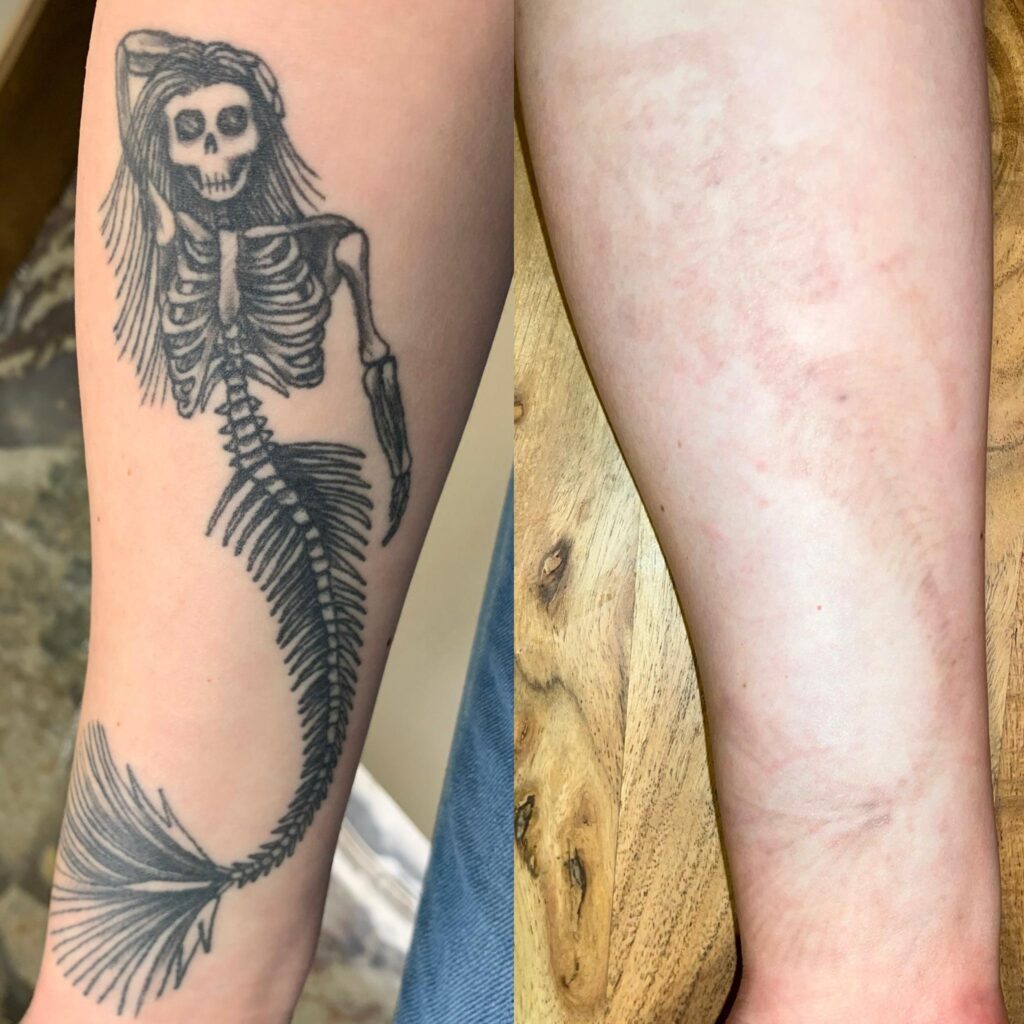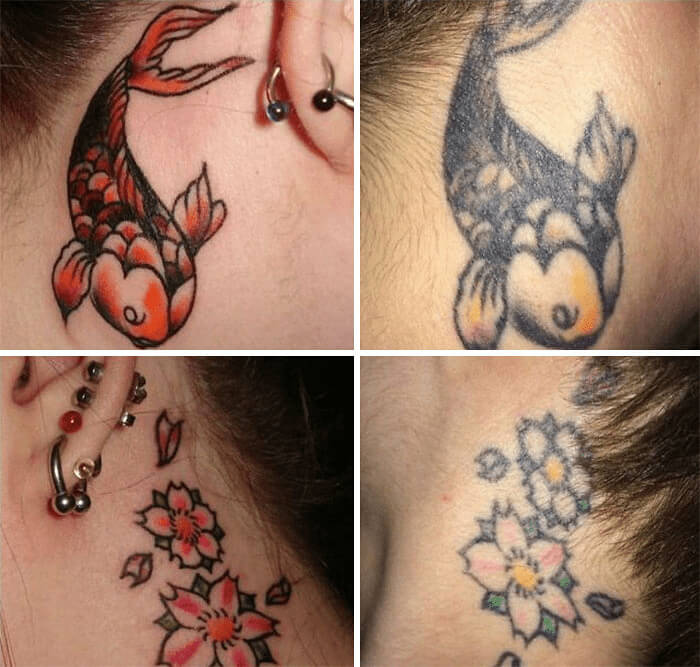So, you finally got that tattoo you always wanted—maybe a name, a meaningful symbol, or something just plain cool. But here’s the kicker: What does that tattoo look like 5, 10, or even 20 years down the road? Tattoos might be “forever,” but that doesn’t mean they stay exactly the same forever.
Let’s joint into the journey your ink takes over the years and how you can keep it looking sharp—or decide to reinvent it.
The Science Behind Tattoo Ink and Skin

How Tattoo Ink Settles in the Dermis
Tattoo needles puncture the epidermis (the outer layer) and deliver ink into the dermis, the second layer of skin. That’s where the ink stays—permanently—because the dermis doesn’t regenerate as quickly as the epidermis.
The Body’s Response to Foreign Ink Particles
Your body treats ink as a foreign invader. Immune cells called macrophages rush in to try to “clean up” the mess but end up just trapping the ink in place. That’s why tattoos don’t just disappear in a few weeks.
Ink Longevity and Skin Regeneration
While the dermis is more stable than the outer skin, it still changes. Over time, the skin stretches, regenerates, and experiences damage. That’s when the tattoo can start to look… different.
Tattoo Aging Timeline

The First Year: Healing and Settling
The first year is critical. As the tattoo heals, scabbing, peeling, and itching are common. If you didn’t follow aftercare perfectly, you might already see premature fading.
3–5 Years: Visible Softening Begins
Now your tattoo may start to lose that crisp, “fresh ink” look. Lines soften, colors may slightly dull, and the skin tone can start to influence how the ink appears.

10+ Years: Fading, Blurring, and Skin Changes
After a decade or two, most tattoos fade noticeably. The lines might look a bit blurry, colors may morph, and small details get lost. Especially if your skin has changed due to age, weight fluctuations, or sun damage.
Factors That Influence Tattoo Longevity

Ink Quality and Pigment Types
Cheaper inks tend to fade faster. Bright colors like red and yellow are notorious for breaking down quicker than black or blue pigments.
Skill of the Tattoo Artist
A seasoned artist knows how deep to go—not too shallow that it fades quickly, and not so deep it causes blowout or scarring.
Placement of the Tattoo on Your Body

Areas exposed to sun (arms, hands, neck) tend to fade quicker. High-friction spots (feet, inner thighs) may also suffer distortion.
Skin Type and Personal Health

Oily skin, dry skin, or conditions like eczema can affect how your tattoo heals and ages. Also, healthy skin = longer-lasting ink.
Sun Exposure and Environmental Elements
UV rays are the #1 enemy of tattoo ink. If you’re a sun-worshipper who skips sunscreen, expect your tattoo to age faster.
Common Changes in Tattoos Over Time

Fading and Loss of Contrast
Even the darkest blacks can fade to charcoal gray. Contrast between elements can become less pronounced.

Blurring and Spreading of Ink
Lines may “bleed” slightly under the skin as it changes. This is more noticeable in fine-line work.
Color Changes
Bright shades like red may fade to pink or orange. Green can lose vibrance, and purple often becomes more of a bluish hue.
Tattoos and Aging Skin

Wrinkles and Skin Elasticity
As collagen breaks down, your skin becomes less firm. Tattoos can stretch and look distorted on wrinkled skin.
Sagging and Stretching
Gained or lost a significant amount of weight? Had a baby? Your tattoo may not be the same after your skin stretches or sags.
Tattoos on Older Adults
That skull on your bicep may be smiling more than intended now—but hey, it’s a part of your story, right?
Maintenance Tips for Long-Lasting Tattoos

Daily Skincare Routines
Moisturized skin holds pigment better. Use unscented lotions and avoid products with harsh chemicals.
Importance of Sunscreen
Use SPF 30+ or higher every time your tattoo sees the sun. Yes, even on cloudy days.
Proper Hydration and Diet
Drink water, eat nutrient-rich foods, and take care of your body. Healthy skin = beautiful tattoos.
Tattoo Touch-Ups and Reworks

When to Consider a Touch-Up
If your tattoo is visibly faded, missing details, or looking uneven, a touch-up can bring it back to life.
Can Faded Tattoos Be Revived?
Absolutely! A skilled artist can re-ink or even enhance the original design with shading and depth.
Cover-Ups vs. Restoration
Sometimes it’s better to cover an old piece than revive it. A good artist will let you know your best options.
Laser Removal and Fading Techniques

How Laser Tattoo Removal Works
Laser pulses break down ink particles, allowing your body to absorb and flush them out. It’s not fast—and it’s not cheap.
Fading for Cover-Ups
Some people opt for partial fading before getting a cover-up to help the new design look cleaner and more defined.
Risks and Side Effects
Expect some discomfort, possible scarring, and multiple sessions. Choose a licensed professional.
Real Stories: Tattoos Decades Later

What People Say About Their Ink After 20+ Years
Many tattoo lovers see their ink as a snapshot of a different time in life. Sure, it’s faded—but it holds memories.
Photos Before and After

Look up side-by-side comparisons online—it’s wild to see how much a tattoo can transform in 15–20 years.
The Psychology of Tattoo Aging

Regret vs. Nostalgia
Some people outgrow their tattoos. Others embrace the “vintage” vibe. It all depends on what your ink meant to you.
Changing Meanings Over Time
That heartbreak tattoo might now symbolize resilience. Your past ink tells your evolving story.
Emotional Connections and Tattoo Evolution
Tattoos aren’t just ink on skin—they’re stories, milestones, and sometimes even scars turned into art. As years pass, their meanings often evolve with us. A tattoo that once symbolized youth and rebellion may now serve as a gentle reminder of growth, strength, or personal transformation.

Many people find new meaning in their tattoos over time, especially when they’ve gone through major life changes. That old ink becomes a part of their identity—a permanent piece of their narrative. For some, it sparks nostalgia; for others, a sense of pride.
So, even as your tattoo fades or stretches with age, remember: it’s still yours. Unique. Unrepeatable. A testament to your journey.
Pro Tattoo Care Tips for the Long Haul

Here are a few extra steps to keep your ink in tip-top shape over the decades:
- Exfoliate (gently): Removing dead skin cells can make your tattoo look a little fresher. Use a mild exfoliant and don’t overdo it.
- Avoid heavy scrubbing: Especially with aging tattoos, scrubbing too hard can break down pigment faster.
- Wear loose clothing over tattoos when possible: This reduces friction and skin irritation.
- Take collagen supplements (if doctor-approved): Collagen supports skin elasticity and may help tattoos hold their shape longer.
- Consider professional-grade tattoo balms: These are specifically formulated to nourish inked skin and prevent fading.
A Final Note to Tattoo Lovers
Time changes everything—and that includes your tattoos. But aging doesn’t have to be a bad thing. It means you’ve lived. You’ve experienced. You’ve evolved.
So whether your ink is brand new or 30 years old, take care of it, show it off proudly, and let it be a chapter in your story that continues to unfold beautifully with age.
And if you ever get the itch for more ink (we know how addictive it is!), you’ll go into that next piece wiser and more prepared.
FAQs
Q1: Do all tattoos fade over time?
Yes, even the best quality tattoos will eventually fade, especially with sun exposure and skin aging.
Q2: Can colored tattoos last longer than black ink?
Typically, black ink lasts longer than colored inks. Bright colors fade faster due to their pigment properties.
Q3: What is the best placement for long-lasting tattoos?
Areas with less sun and movement like the upper thigh, upper back, or inner arm age slower.
Q4: How often should I get my tattoo touched up?
Every 5–10 years is common, but it depends on your tattoo’s condition and how well you care for it.
Q5: Can skincare products slow tattoo fading?
Yes! Using sunscreen, moisturizers, and avoiding harsh chemicals can significantly prolong tattoo vibrancy.

